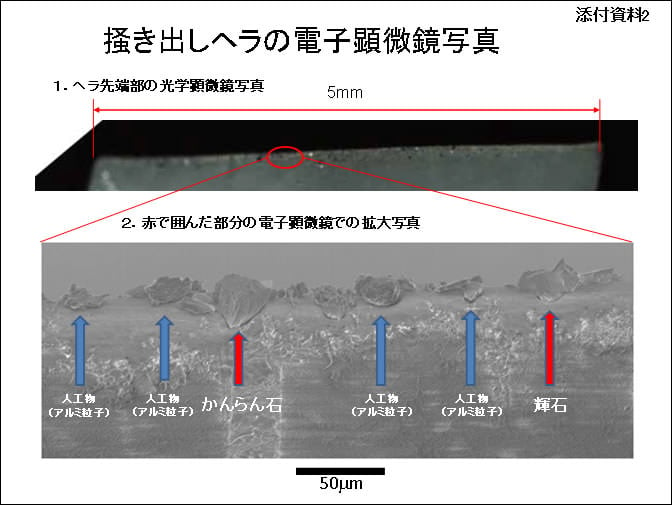[/caption]
The Japan Aerospace Exploration Agency (JAXA) has confirmed that the tiny particles inside the Hayabusa spacecraft's sample return container are in fact from the asteroid Itokawa. Scientists examined the particles to determine if the probe successfully captured and brought back anything from the asteroid, and in a
press release
said "about 1,500 grains were identified as rocky particles, and most were determined to be of extraterrestrial origin, and definitely from Asteroid Itokawa."
These are the first samples from an asteroid ever returned to Earth;
the only other extraterrestrial samples brought back to Earth came from the Apollo missions to the Moon.
See correction, below.
Previously, JAXA said that although particles were inside the container, it wasn't clear if they were from the asteroid or if they could be of terrestrial origin (dust from Earth that could have been inside the container).
The particles samples were collected from the chamber by a specially shaped Teflon spatula and examined with a scanning electron microscope. There were two chambers inside the container, and from the press release (in Japanese) it appears all the particles were found in one chamber, Chamber A.
Most of the particles are extremely small, about 10 microns in size and require special handling and equipment. Unfortunately they aren't the "peanut-sized" chunks of rock that the mission originally hoped to capture. This will make analyzing the particles difficult, but not impossible.
[caption id="attachment_66340" align="aligncenter" width="512" caption="Hayabusa's sample return cannister and parachute on the ground in the Australian outback. Credit: JAXA"]
[/caption]
During the seven-year round trip journey, Hayabusa arrived at Itokawa in November, 2005. The mechanism that was intended to capture the samples apparently failed, but scientists were hopeful that at least some dust had made its way into the return canister. After a circuitous and troubled-filled return trip home, the sample return capsule was ejected and landed in Australia in June of this year.
Here are the other successful sample return missions: Apollo Moon missions (1969-1972) Soviet Union's Luna 16 (1970) returned 101 grams of lunar soil Luna 20 (1974) returned 30 grams Luna 24 (1976) returned 170.1 grams. The Orbital Debris Collection (ODC) experiment, deployed on the Mir space station for 18 months during 1996–1997, used aerogel to capture interplanetary dust particles in orbit. Genesis (2001-2004) captured and returned molecules collected from the solar wind. It crashed in the Utah desert, but samples were able to be retreived. Stardust (1999-2006) collected particles from the tail of a comet, as well as a few interstellar dust grains.
Source:
JAXA
 Universe Today
Universe Today
